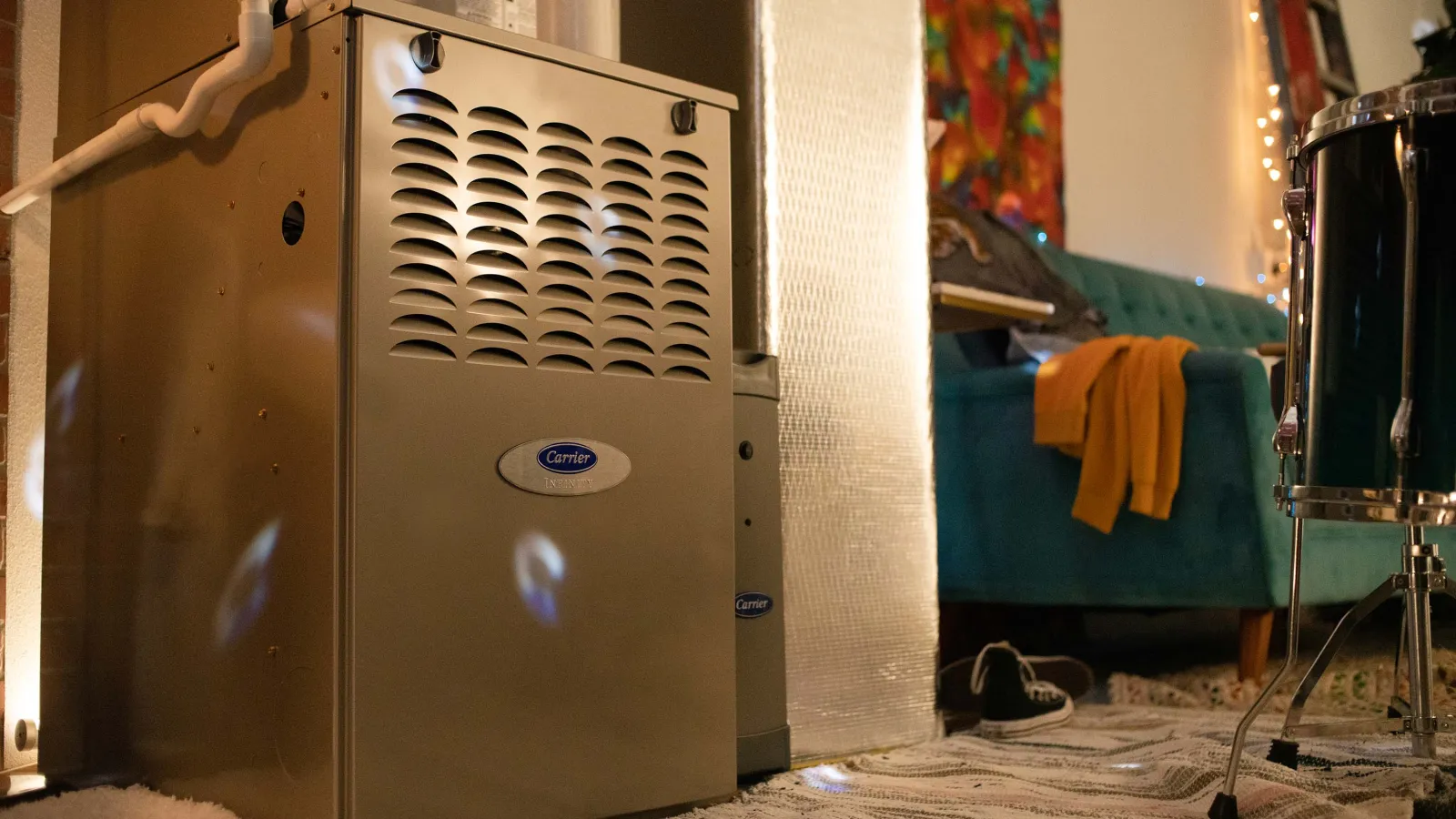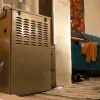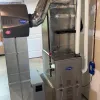If you’re replacing a standard efficiency furnace, the idea of installing a high efficiency unit might be tempting. In some cases, opting for a high-efficiency furnace is a good idea. But it isn’t always the best choice – even if your HVAC guy says you’ll make up the difference in cost.
As with most things in HVAC, it all depends.
The furnace that makes the most sense for you might not bear the “high efficiency” label. It all comes down to the location of the furnace, your goals for energy efficiency, and various attributes of your home.
If you need help choosing a new furnace for your Atlanta area home, we can help! Our team performs extensive analysis to help you select the most optimal furnace.
Differences between 80% and 95% furnaces
So a 95% furnace is more efficient than an 80% furnace. It should be a simple choice, right?
Well, not really. These furnaces operate differently, too. An 80% furnace uses open combustion to generate energy from natural gas. In other words, it sucks air from the surrounding area. A 95% furnace doesn’t do that – it uses sealed combustion, a process by which the furnace sucks in air from the outdoors. If your HVAC contractor installs the 95% furnace correctly, it will pull in outdoor air via a dedicated PVC pipe.

Here’s why all of this matters for homeowners replacing a furnace:
- Cost: If you’re replacing an 80% furnace that’s in a vented attic or crawl space, you probably won’t make up the difference in cost when you install a 95% unit. The 80% furnace needs combustion air. In a vented space, that combustion air is already there. If you opt for the 95% furnace, you’ll need to create a pathway for combustion air to enter the unit. Installation is trickier, so it’s more expensive.
- Safety: If your furnace is in a vented area, gases produced by the combustion process generally don’t pose a safety risk. But if your furnace is in a sealed attic or encapsulated crawl space, open combustion does have the potential to cause problems. You’re better off installing a 95% furnace with a concentric vent that both sucks in air and expels exhaust. In an unvented environment, the 95% furnace is a safer choice.
That’s why the location of your furnace is so important! In our climate zone, it’s hard to justify the higher cost of a 95% furnace if you’re installing it in a vented space. By the same token, it’s hard to ignore the safety risks of an 80% furnace if you’re installing it in an enclosed, sealed environment.
Other factors that impact furnace efficiency
Just as SEER isn’t the only factor that influences air conditioner efficiency, AFUE isn’t the only specification you should look at when choosing a new furnace.
If energy efficiency matters to you, it’s also important to understand:
- Stages of heat, whether one stage, two stages or modulating
- Airflow, whether on/or or variable speed
Single-stage furnaces only have one setting: full blast. When a single-stage furnace is running, it’s blowing hot air into your home using the maximum capacity possible. A two-stage furnace, on the other hand, has two different speeds: full blast and “slow,” a speed that usually works out to around 65% of the furnace’s capacity.
Most of the time, the slower speed is sufficient for heating your home and doesn’t require as much energy as a single-stage furnace. It’s also quieter. You won’t get that “whoosh” of warm air every time the heat turns on. When the temperature drops significantly and the slower speed won’t keep your home warm, the second stage kicks in and the furnace operates a full blast.
Why does all of this matter? Because both 80% and 95% of furnaces are available as single-stage or two-stage units. An 80% furnace with two stages of heat will usually be better for your energy bills than a 95% furnace with just one stage.
Some 95% of furnaces even come with a fully modulating gas valve. It’s similar to having two stages of heat, only better! Instead of just two stages, the furnace operates at a variety of capacities to match your heating needs at any given moment.
Variable speed airflow is a plus as well. Standard furnaces will offer full blast airflow with no variation in speed. Units with variable speed airflow do a better job controlling the amount of hot air that enters your home at any given time. As such, they’re more efficient than standard units.
That’s right. AFUE isn’t the end-all, be-all metric for furnace efficiency. Depending on your situation, other factors might matter even more!
Here’s the bottom line for your home
Everyone’s home is different. You might have a unique situation that doesn’t fit nicely inside the guidelines we’re discussing here.
With that caveat, here’s the best furnace choice for your home if:
- You’re replacing an 80% furnace in a vented space: Go with a new 80% furnace. If you want a more energy-efficient model, consider a two-stage unit with variable airflow before committing to a 95% furnace and the extra construction that it will require.
- Your new furnace will live in an enclosed or encapsulated space: A 95% furnace makes sense here. For even greater efficiency gains, consider a two-stage or fully modulating unit with variable airflow.
- Your furnace exhausts into a chimney: A 95% furnace with a new exhaust vent is a good idea in case the chimney liner has been compromised. You don’t want to create a situation where exhaust gases creep into your home! If you go with another 80% model, consider installing a new chimney liner for safety.
- Energy efficiency is your top concern: A fully modulating 95% furnace with variable airflow is your best choice. Just keep in mind that you might not enjoy good ROI if you’re replacing an 80% furnace in a vented environment.
What’s great is that you’ll probably improve efficiency no matter what. Unless you replace a single-stage 80% furnace with a virtually identical unit, there are efficiency gains to enjoy. Even upgrading to a two-stage unit is a major change if you’re used to a standard 80% furnace!
So, should you go for the higher AFUE percentage with your next furnace? You might not have to. And if you do, you’ll probably love it.






